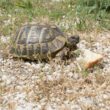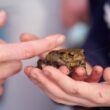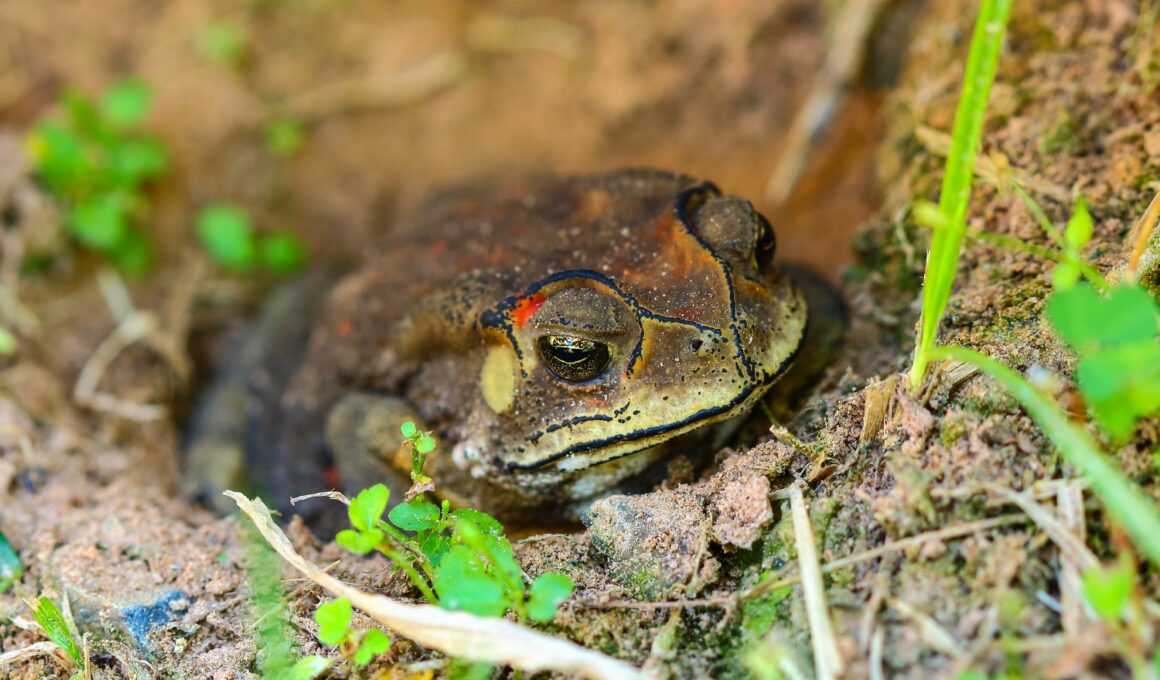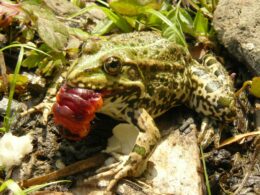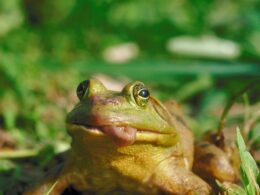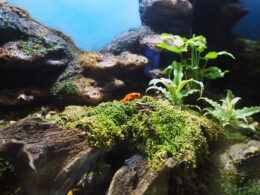In this article Show
I’ve been fortunate enough to care for a range of these incredible creatures. Among them is the charismatic Pacman frog, also known as the horned frog.
You might be familiar with its striking appearance, but did you ever wonder about its behaviors, especially in relation to hibernation? I’ve spent countless hours researching and observing these captivating creatures, both in captivity and the wild.
Today, we’ll explore whether Pacman frogs hibernate, understand their unique activity patterns, and offer some insights for those who are curious or are fortunate enough to share their home with one of these fascinating amphibians.
Quick Answer
No, Pacman frogs do not hibernate. Instead, they undergo a process called estivation, which is a state of dormancy during hot, dry periods. In this state, they conserve energy and water, often burrowing in moist substrates. It’s essential for pet owners and enthusiasts to recognize this behavior and differentiate it from health-related lethargy.
Do Pacman Frogs Hibernate?
When discussing the behavior of amphibians, the terms ‘hibernation’ and ‘estivation’ often come up. Many of us are familiar with the concept of hibernation—where animals go into a deep sleep during the cold months.
However, for the Pacman frog, it’s not hibernation but rather estivation that plays a crucial role in its lifecycle.
What is Estivation?
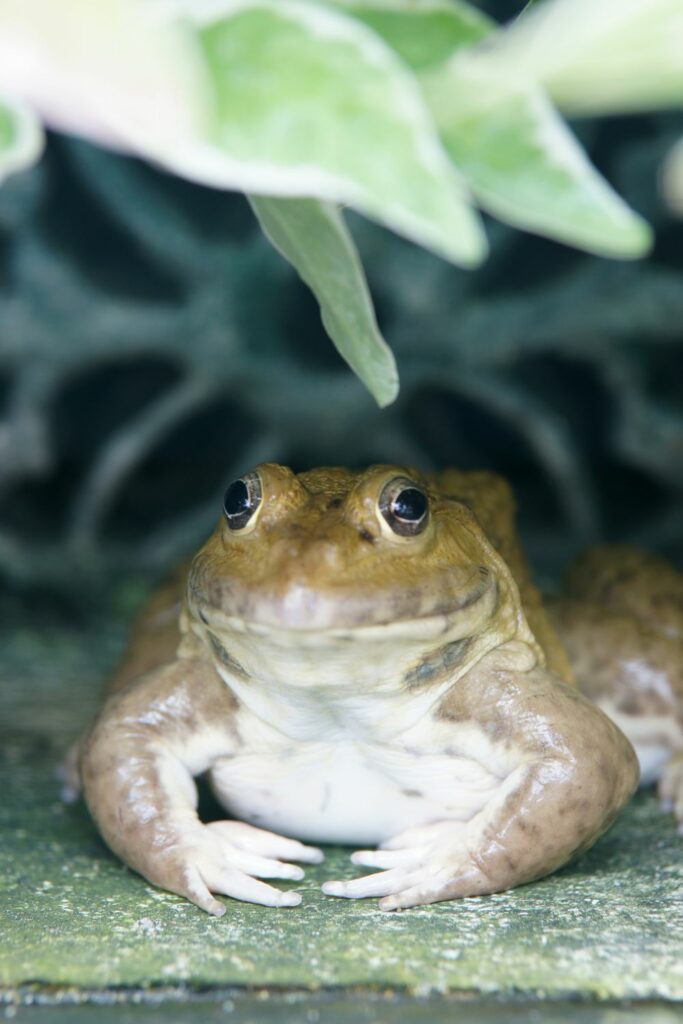
Estivation, in essence, is a state of dormancy or reduced metabolic activity that certain animals, including the Pacman frog, enter during periods of extreme heat or dryness.
This mechanism helps them conserve energy and survive in conditions that might be inhospitable for their regular activities. In the wild, a Pacman frog might burrow itself in the mud, leaving only its nostrils exposed, to escape the hot, dry conditions above.
How Does Estivation Differ from Hibernation?
Triggering Factors
While hibernation is triggered by cold temperatures and reduced food availability, estivation is a response to hot, dry conditions.
Duration
Hibernation typically lasts through the winter months, whereas estivation can vary based on the environmental conditions. It can be short-lived, or in some cases, it might extend for months until conditions become favorable again.
Physiological Changes
Both states involve a slowdown in metabolic rate, but the physiological processes differ. During hibernation, there’s a significant reduction in body temperature, heart rate, and breathing rate.
In contrast, during estivation, the primary focus is on water conservation. This means reducing water loss through processes like respiration.
According to a study published in the Discover Animals Journal, Pacman frogs in their natural habitat often face fluctuating environmental conditions, including extended dry periods.
To combat these challenges, they’ve developed behavioral adaptations like estivation to survive these periods of adversity.
By understanding these behaviors, we gain a richer appreciation for the complexity and adaptability of creatures like the Pacman frog. They may not hibernate in the traditional sense, but their ability to estivate is no less remarkable.
Caring for Pacman Frogs in Captivity
Having a Pacman frog as a pet can be a rewarding experience. These amphibians, with their distinctive appearance and intriguing behaviors, can be fascinating to observe. However, understanding and catering to their unique needs, especially during estivation, is essential for their well-being.
Recognizing Signs of Estivation in Pet Frogs
When a Pacman frog is preparing to estivate or is already in this state, certain signs become evident:
- Reduced Activity: Your frog might become less active, spending more time buried in its substrate with only its eyes or nostrils visible.
- Decreased Appetite: A Pacman frog preparing for estivation might eat less or even refuse food altogether.
- Changes in Appearance: Their skin might appear more wrinkled or rough as they try to minimize water loss.
- Substrate Preference: They often show a preference for burrowing deeper into their substrate, seeking cooler and moister conditions.
Creating Optimal Conditions for Estivation
- Moist Substrate: Ensure that the substrate remains moist (but not waterlogged). Coconut fiber or sphagnum moss are good choices, as they can retain moisture effectively.
- Shade and Cool Spots: Provide shaded areas in the enclosure, and consider placing one side of the tank in a cooler spot to offer a temperature gradient.
- Water Availability: Always have fresh water available. Even if they’re estivating, they might occasionally rehydrate.
- Avoid Disturbances: During this period, minimize handling or disturbances to allow the frog to rest peacefully.
Potential Health Risks and Precautions
While estivation is a natural process, in captivity, it can come with certain risks:
Dehydration
Even though estivating frogs conserve water, prolonged periods without access to moisture can lead to dehydration. Regularly misting the enclosure can help.
Incorrect Estivation Assumption
Sometimes, reduced activity might not be due to estivation but other health concerns. If you notice any unusual signs, like extreme lethargy, weight loss, or discoloration, it’s essential to consult a veterinarian.
Dietary Concerns
While it’s normal for estivating frogs to eat less, ensure they have access to food for when they’re ready to feed again. Nutrient deficiencies can arise if they go too long without proper nourishment.
Being proactive in understanding your Pacman frog’s behavior and needs can make the estivation period smoother for both of you.
With the right knowledge and care, your amphibious friend can thrive, offering you a unique glimpse into the world of nature’s adaptability.
The Impact of Climate and Seasonality on Pacman Frogs
Nature has its rhythms, and just as we adapt to the changing seasons, so do the Pacman frogs. These amphibians, native to the rainforests of South America, have evolved over millennia to respond to their environment’s cues. But how exactly do climate and seasonality influence them? Let’s explore.
How Seasonal Changes Can Affect Their Behavior
Rainy Season Response
In their natural habitats, the rainy season provides ample water, making the environment moist and conducive for hunting and feeding. Pacman frogs are more active during these times, often hunting at night and reproducing.
Dry Season Adaptation
Conversely, when the dry season sets in, the reduced humidity and increased temperatures push Pacman frogs toward estivation. This is their way of conserving energy and water until conditions become favorable again.
Temperature Fluctuations
Pacman frogs are ectothermic, meaning their body temperature is regulated by their surroundings. Sudden cold snaps or unseasonably warm periods can affect their activity levels and overall behavior.
Do They Need to Estivate in All Conditions/Environments?
Not necessarily. While estivation is a survival mechanism developed for the wild, Pacman frogs in captivity might not always exhibit this behavior, especially if they’re kept in controlled environments with consistent temperature and humidity. Some key points to consider:
Controlled Environments
If you maintain a stable environment in captivity that mimics the frog’s natural habitat (consistent temperature, humidity, and light patterns), your Pacman frog might not feel the need to estivate.
Stress and Change
However, sudden changes in their environment, like a sharp drop in humidity or a significant rise in temperature, can trigger estivation even in captivity.
Individual Variations
Just as humans have individual preferences and behaviors, so do Pacman frogs. Some might be more prone to estivate in captivity, while others might not, even under similar conditions.
In conclusion, while Pacman frogs have evolved certain behaviors to cope with their native habitats’ seasonality and climate, they can be quite adaptable.
As caretakers, it’s our responsibility to understand and respect these natural tendencies, ensuring our pet frogs are comfortable, safe, and healthy, irrespective of the season.
Common Misconceptions About Pacman Frog Inactivity
Pacman frogs, with their distinctive behaviors and unique habits, are often subjects of intrigue and curiosity. However, with curiosity sometimes come misconceptions, especially when it comes to their periods of inactivity. Let’s address some of these misconceptions and set the record straight.
Difference Between Lethargy Due to Illness and Natural Estivation
Duration
While estivation can last for extended periods, sudden and prolonged inactivity without prior signs of burrowing or decreased appetite might be indicative of an underlying health issue.
Physical Appearance
During estivation, a Pacman frog might have a slightly wrinkled skin appearance to reduce water loss. In contrast, a sick frog might display discoloration, patches, or spots that weren’t there before.
Response to Stimuli
A frog in estivation will still react to significant disturbances, albeit sluggishly. A lethargic frog due to illness might not respond at all or could exhibit weak, erratic movements.
Environmental Triggers
If there haven’t been any significant changes in temperature or humidity to induce estivation, and the frog suddenly becomes inactive, it’s crucial to consider potential health problems.
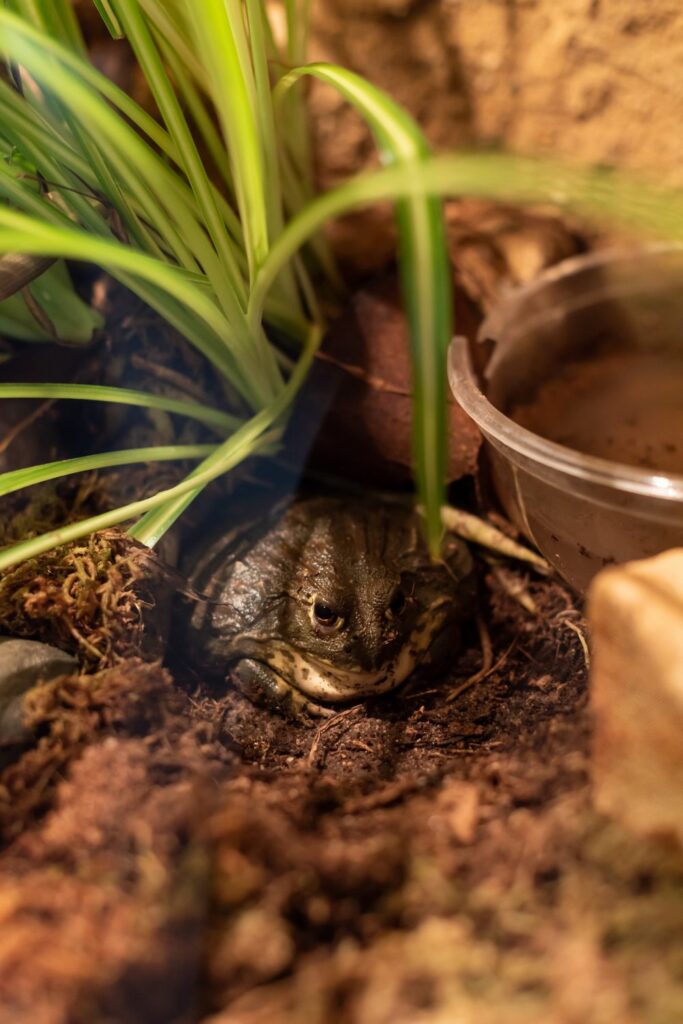
Other Myths Debunked
Pacman Frogs Are Always Lazy
While they aren’t as active as some other amphibians, labeling them as ‘lazy’ is misleading. Their ambush predatory nature means they often lie in wait for prey, which can be mistaken for laziness.
They Can Survive Long Without Food During Estivation
While it’s true they conserve energy during estivation, it doesn’t mean they should be left without food for extended periods. Regularly offering food ensures they have the necessary nutrients when they decide to eat.
All Pacman Frogs Will Estivate in Captivity
As previously discussed, while estivation is a natural behavior, it doesn’t mean every Pacman frog in captivity will exhibit it. Proper environmental conditions can often prevent the need for estivation.
They Hibernate Like Mammals
This myth likely stems from the confusion between hibernation and estivation. Pacman frogs don’t hibernate in the cold; they estivate during hot, dry conditions.
Being informed and debunking myths is an essential step towards responsible pet ownership. When we understand our pets’ behaviors and needs better, we can offer them a life that’s both comfortable and enriching.

